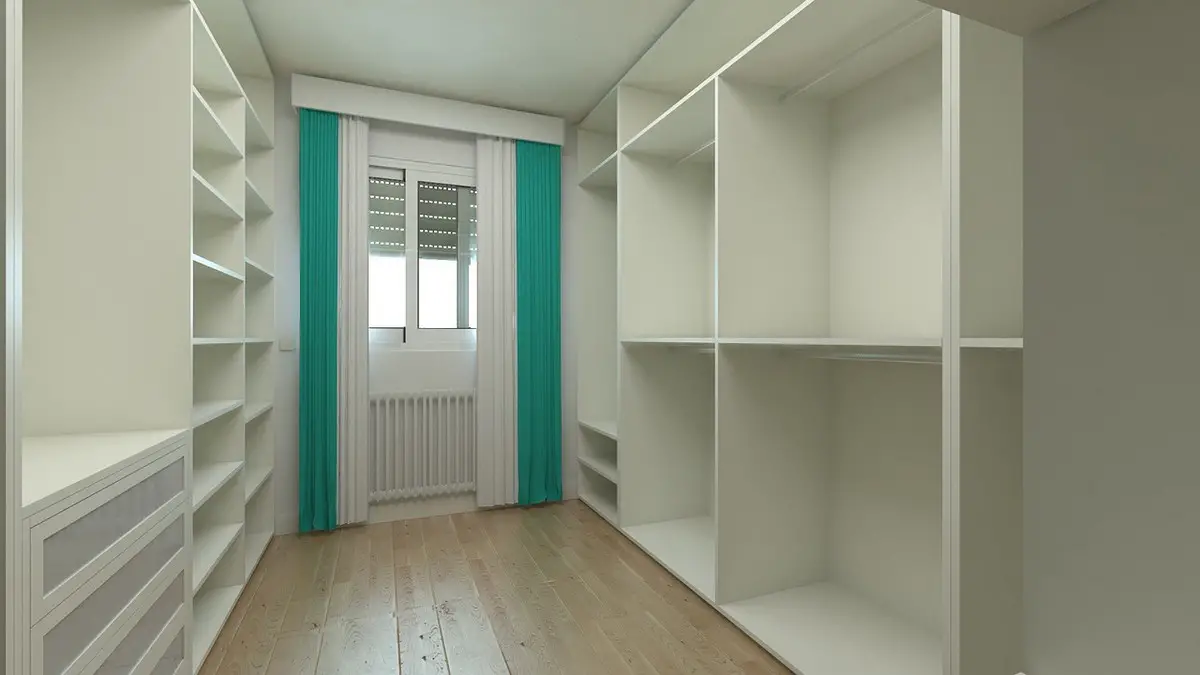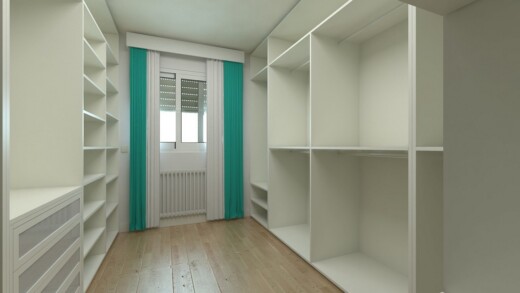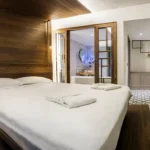Integrating wardrobes into interior design, Architectural interior clothes store tips, Home bedroom storage advice guide
Integrating Wardrobes into Interior Design Architecture
28 December 2023
In the contemporary world of interior design, wardrobes have transcended their traditional role as mere storage solutions, evolving into significant elements of architectural design. This article explores how wardrobes can be seamlessly integrated into the architectural fabric of a home, enhancing both its functionality and aesthetic appeal.
The Evolution of Wardrobe Design
Traditionally, wardrobes have been viewed as utilitarian furniture pieces, designed primarily for storage. However, modern interior design has seen a shift, with wardrobes now playing a pivotal role in the architectural narrative of a space. Built in wardrobes, in particular, offer a sleek and seamless way to integrate storage into a room’s layout while maintaining a clean visual flow. This evolution is evident in the bespoke creations by The Heritage Wardrobe Company, where wardrobes are custom-designed to fit the precise dimensions and layout of a room, maximising space utilisation and complementing the room’s decor.
Architectural Integration
As Dezeen aptly highlights, modern architects and designers are reimagining the role of wardrobes in interior spaces. Instead of concealing them or blending them into the background, wardrobes are increasingly becoming focal points in rooms. This shift is achieved through the use of bold colours, unique materials, and innovative designs. A wardrobe with vibrant red-leather doors or bright yellow shelving, for instance, can instantly draw the eye and become a central feature of the room.
Harmonising with Architectural Elements
The integration process also involves a careful consideration of the wardrobe’s relationship with other architectural elements in the space. This includes understanding and complementing the room’s existing lines, forms, and materials. For example, a wardrobe with sleek, clean lines and minimalist design can enhance a modern, contemporary space, while one with ornate detailing and rich wood finishes can add warmth and elegance to a more traditional setting.
Material and Texture Play
The choice of materials and textures is crucial in creating wardrobes that are both functional and aesthetically pleasing. Innovative use of glass, metal, natural wood, or even fabric can add depth and character to the wardrobe, making it a piece of art in its own right. Textural contrasts can be particularly striking, such as combining rough, natural wood with smooth, glossy finishes, creating a wardrobe that is visually engaging and tactile.
Color as a Design Tool
Colour plays a significant role in integrating wardrobes into the architectural fabric of a room. Beyond just matching the colour scheme of the room, wardrobes can be used to introduce new hues and tones that complement or contrast with the existing palette. This use of colour can help to define different zones within a space, create visual interest, or set a particular mood or atmosphere.
Innovative Design Features
The design of modern wardrobes often includes innovative features that enhance both their functionality and aesthetic appeal. This could include cleverly designed internal storage solutions, integrated lighting systems, or even technologically advanced features like motorised doors or built-in screens. These features not only make the wardrobe more practical and user-friendly but also contribute to its status as a standout piece in the room.
Statement Wardrobes
Statement wardrobes, as showcased in Dezeen’s lookbook, are a testament to the creative potential of these pieces. Architects are challenging the traditional idea of concealed storage by creating wardrobes that are visually striking. From red-leather doors to bright yellow shelving, these wardrobes are designed to be celebrated, not hidden, adding a dynamic and artistic dimension to the interior space.
Bespoke Solutions
The bespoke approach by The Heritage Wardrobe Company emphasises the importance of tailoring wardrobes to individual style preferences and spatial requirements. This customisation extends beyond size and shape; it encompasses material selection, colour schemes, and finishing details, ensuring that the wardrobe complements the architectural style of the home and reflects the homeowner’s personality.
Transforming Spaces
Hammonds explores transforming a spare bedroom into a walk-in wardrobe, illustrating how underutilised spaces can be repurposed to add value and functionality to a home. This transformation is not just about adding storage; it’s about creating a luxurious, organised space that enhances the living experience.
Functional Artistry
Incorporating wardrobes into interior design architecture is an exercise in functional artistry. It involves balancing aesthetic appeal with practicality. The design must address storage needs while also contributing to the overall beauty of the room. This balance is achieved through thoughtful design, where every aspect of the wardrobe, from the layout to the hardware, is considered in relation to the room’s architecture.
Material Harmony
The choice of materials for wardrobes is crucial in achieving architectural harmony. Materials should complement or contrast with the room’s existing elements, such as flooring, wall finishes, and other furniture. The use of glass, wood, metal, or fabric in wardrobe design can either create a cohesive look or introduce an exciting visual contrast.
Lighting and Wardrobes
Lighting plays a significant role in integrating wardrobes into interior architecture. Well-placed lighting can highlight the wardrobe’s design features, create ambience, and improve functionality. Whether it’s internal lighting that illuminates the contents of the wardrobe or external lighting that accentuates its form, lighting is a critical component of wardrobe design.
The Future of Wardrobe Design
Looking ahead, the future of wardrobe design in interior architecture is promising and exciting. With advancements in materials, technology, and design thinking, wardrobes will continue to evolve, offering even more innovative ways to integrate storage into our living spaces. We can expect to see more personalised solutions, sustainable materials, and technology integration, making wardrobes an integral and interactive part of home design.
In conclusion, integrating wardrobes into interior design architecture represents a blend of functionality, innovation, and aesthetic sophistication. By embracing creativity and customisation, wardrobes can significantly enhance the beauty and functionality of our living spaces.
Comments on this guide to Integrating Wardrobes into Interior Design Architecture article are welcome.
Edinburgh Architecture
Comments on this guide to Integrating Wardrobes into Home Interior Design article are welcome.





